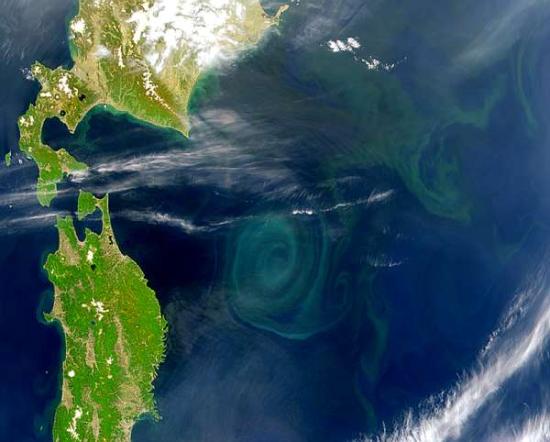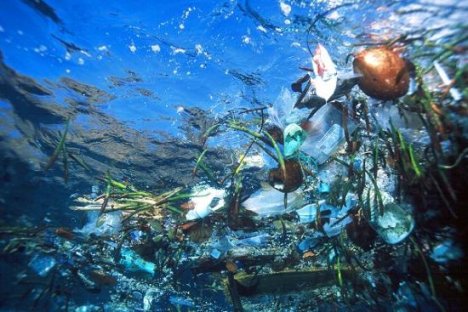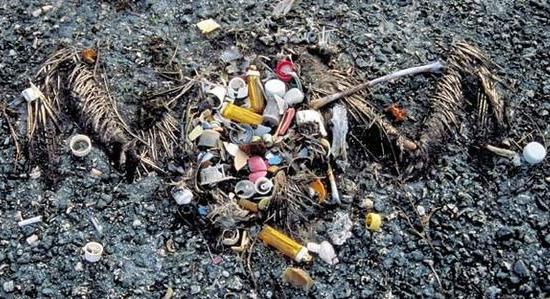This is a conversation my five year old and I had last night at the dinner table…
Son: Do apples last forever?
Me: No, nothing lasts forever.
Son: No, that’s not true. There are two things that last forever: love… and plastic.
While it does my heart good that he is aware of the power of love and the insidiousness of plastic, I am overwhelmed with sadness that my children are going to have to worry about the long-term effects of the plastic we are continuously making, consuming, and throwing away.
Have you heard of The Great Pacific Garbage Patch?
The Great Pacific Garbage Patch is growing bigger every day. It is currently estimated to be twice the size of Texas and contains 3.5 million tons of plastic trash. Photo credit: BuffaloReadings.com
Plastic accounts for 90% of all trash in our oceans and every square mile of ocean contains 46,000 pieces of floating plastic. Photo credit: cesarharada.com via Flickr
This albatross had more than its fair share of plastic garbage. Photo credit: Algalita.org
***************************************
This conversation came at an interesting time since I have become even more inspired by Beth from Fake Plastic Fish. I have read her blog and follow her on twitter, but her recent impassioned plea to Oprah has moved me to make even more changes in my life.
There are several big problems with plastic. For one, it is made from petroleum. Oil. According to the agribusiness Archer Daniels Midland, about 10% of all U.S. consumption of oil is used to make plastics. Aren’t we all trying to reduce our oil consumption? There are reasons for that.
For another, plastic recycling is misleading. The plastic that actually is recycled is not made into new plastic containers. Usually it is made into a secondary product that then is not recyclable, partially because plastic degrades as it is recycled and partially because it is cheaper to just manufacture virgin plastic.
And to put the icing on the cake, Bisphenol-A, which is found in polycarbonate plastics (#7), is a hormone disruptor that can cause a whole host of health problems.
***************************************
So, how do we begin to reduce our plastic consumption?
1. Seek out alternative containers when shopping and for food storage: glass, paper, cardboard.
2. Bring your own reusable bags anytime you shop. You can even use small reusable bags for bulk items and produce.
3. Bring your own travel mug anytime you get coffee or other drinks.
4. Stop buying bottled water. There some great stainless steel water bottles out there now.
5. Use reusable utensils at home and bring along a travel set when going on a picnic or to a restaurant that only has plastic.
6. Stop buying plastic toys. With the incredible breadth of eco-friendly toys available, there is little reason to purchase new plastic toys.
7. Reuse containers when possible.
Check out the following links (and the links sprinkled throughout the post) if you want more in depth information about what was discussed. Please add any other relevant sites in your comments.
Great Pacific Garbage Patch
http://www.treehugger.com/files/2008/04/algalita-junk.php
http://www.treehugger.com/files/2008/04/pacific-trash-vortex-signifies-future-of-oceans.php
http://www.treehugger.com/files/2009/05/first-great-pacific-garbage-patch-clean-up-effor-to-begin-next-month.php
http://science.howstuffworks.com/great-pacific-garbage-patch.htm
The Problems With Plastic
http://www.reusablebags.com/facts.php?id=18
http://health.usnews.com/articles/health/2007/09/22/the-problem-with-plastic-bpa.html
http://www.motherjones.com/environment/2009/05/plastic-fantastic




Pingback: Tuesday Top Three: green changes for the new year |